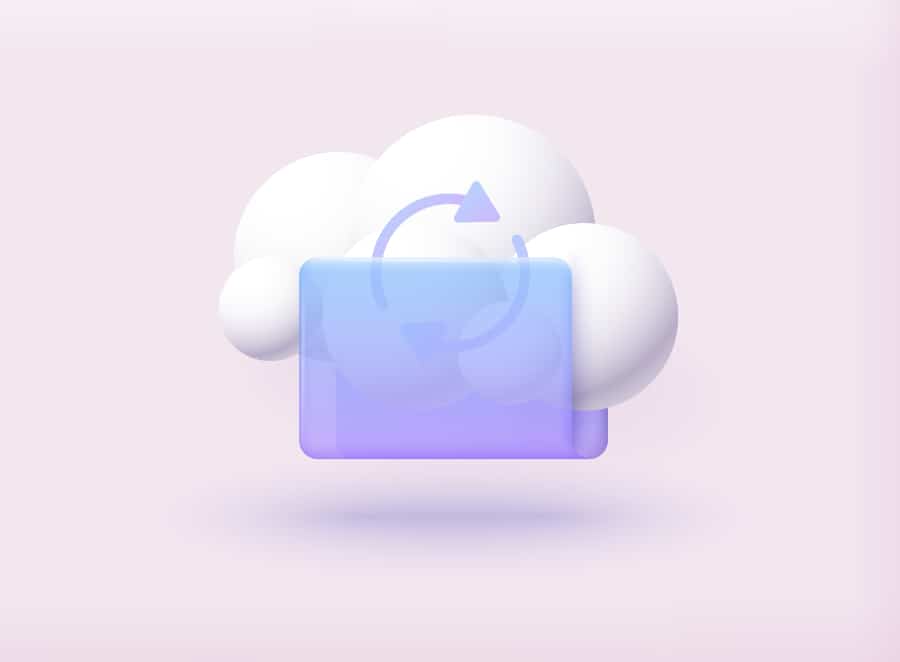Secure cloud file transfers: Best practices for organisations


James Thorpe
Share this content
In today’s data-driven world, organisations increasingly rely on the cloud to transfer files securely and efficiently, writes Heath Kath, Senior Solutions Consultant, Fortra.
Whether you are working in a pure cloud environment, a hybrid setup or leveraging managed file transfer as a service (MFTaaS), ensuring the security of your file transfers is paramount.
In this blog, we’ll explore the best practices that organisations should follow to safeguard their data in the cloud, encompassing both technical and employee considerations.
Choosing the right cloud environment
Cloud computing has become a fundamental component of modern business operations, providing flexibility, scalability and cost efficiency.
However, when it comes to file transfers, the choice of the right cloud environment should involve a determination of whether that solution is secure and if it can help you meet applicable compliance requirements around how data is safeguarded.
Does your solution incorporate strong encryption protocols? What kind of authorisation or access controls are built in?
In addition, when choosing a solution, you should look at your options’ performance and reliability. Can a solution reliably get your business-essential files where they need to with both speed and integrity?
And be mindful of whether your cloud solution can integrate with your existing systems and provide the level of support you might require. Off the shelf cloud solutions can often lack in these areas.
The three primary options are public, private and hybrid cloud. Each has its own set of considerations:
- Security concerns – different cloud environments offer varying degrees of security. While public cloud providers do offer some robust features, you must configure them properly to ensure the security of your files. Private clouds provide a higher level of control and isolation, but this comes at a higher cost. Hybrid clouds combine elements of both, allowing you to balance security and cost efficiency. Choosing the right balance that aligns with your organisation’s risk tolerance is critical
- Compliance requirements – many industries and organisations are subject to regulatory requirements regarding data storage and transfer. Failing to choose a cloud environment that complies with these regulations can lead to legal consequences and reputational damage. Your choice of cloud environment should take into consideration whether it aligns with the specific compliance standards your organisation must adhere to
- Data control and sovereignty – exerting control over your data represents a crucial factor and this becomes even more pronounced as data sovereignty requirements intensify across diverse jurisdictions. Opting for private or hybrid cloud environments provides an elevated degree of authority over crucial aspects such as data localisation, access permissions and retention policies, allowing organisations to position themselves to navigate the intricate landscape of data sovereignty mandates and evolving compliance standards with precision and confidence
Managed file transfer as a service (MFTaaS)
MFTaaS is an excellent option for organisations looking to streamline their file transfer processes while enhancing security and compliance. MFTaaS is a valuable choice for many reasons, including:
- Streamlined operations
- Robust security features
- Scalability and reliability
- Cost effectiveness and excellent support
- Access anytime, anywhere
However, when choosing an MFTaaS provider, you should confirm that they offer robust encryption and security protocols, can grow with your organisation’s needs and comply with industry regulations relevant to your business.
Technical and employee best practices
When it comes to secure cloud file transfers, a holistic approach that encompasses both technical and employee best practices is crucial. This section explores the key measures that organisations should implement to secure their file transfer processes.
Technical best practices
Technical best practices ensure the secure and efficient transmission of data in a cloud environment. The most essential are:
- Encryption at rest and in transit – data should be encrypted at rest and in transit. Utilise encryption protocols like SSL/TLS for data in transit and encryption solutions provided by your cloud service for data at rest. In private cloud settings, you can also leverage approaches like Bring Your Own Key (BYOK) or Hold Your Own Key (HYOK)
- Data loss prevention (DLP) – implement a robust DLP solution to prevent unauthorised data transfers and leakage by monitoring data in real-time and enforcing policies to prevent sensitive data from being transferred outside of your organisation
- Intrusion detection systems (IDS) – employ IDS to monitor unusual activities or potential security breaches and alter security teams for any suspicious behavior that may indicate a security threat
Employee Best Practices
Employee best practices are essential for maintaining the integrity of your file transfers. Educating and involving your team is critical and includes:
- Employee training and awareness – regularly educate your employees on security best practices, emphasising the importance of secure file transfers. Provide training on recognising phishing attempts and social engineering techniques
- Multi-factor authentication (MFA) – enforce multi-factor authentication (MFA) for accessing file transfer systems. Consider deploying phishing-resistant MFA, especially for privileged accounts or for employees with access to critical systems or data
- Access control – implement stringent access controls to limit access to files and systems. Ensure that users have the minimum level of access necessary to perform their job functions. Regularly review and update access permissions as needed
Auditing, backups and disaster recovery
In addition to implementing all the above best practices, continuously monitoring and auditing cloud file transfers to maintain the security of your files and data is essential.
Regular auditing and monitoring are the vigilant guardians of secure cloud file transfers. They play a crucial role in identifying and mitigating potential threats, ensuring compliance and maintaining the overall integrity of data transfers.
Log analysis and security information and event management (SIEM) solutions facilitate proactive monitoring and rapid incident response.
The systematic review, analysis and consolidation of security related data from various sources provide a holistic view of an organisation’s security posture to enable security teams to react swiftly to emerging threats and limit the impact of a potential data breach.
Finally, data backup and disaster recovery are critical components of a comprehensive strategy to safeguard against data loss and system failures in cloud file transfers.
These practices ensure that, even in the face of unforeseen disasters, your organisation can maintain the availability and integrity of data.
Redundant and automated backups help organisations prepare for the unexpected to ensure business continuity even in the event of a disaster.
Consider the cloud for secure file transfers
To protect your data and maintain integrity, it’s essential to implement best practices outlined in this blog.
Whether you’re choosing the right cloud environment, opting for MFTaaS or focusing on technical and employee best practices, a comprehensive approach to security is key.
Embrace these practices to keep your data safe in the cloud and maintain your organisation’s reputation.
This article was originally published as a blog on Fortra’s website. To find out more information about the company’s work, please visit: blog/secure-cloud-file-transfers-best-practices-organizations


